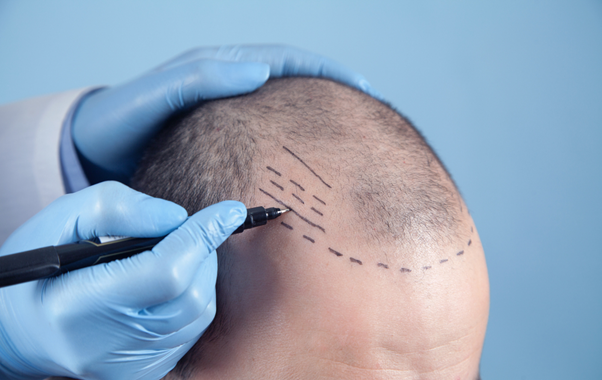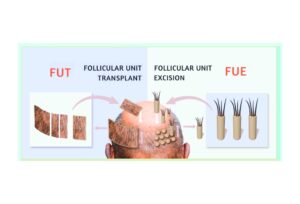
If you are considering a hair transplant, Toronto is a great place to do it. There are many qualified surgeons here, and the cost of surgery is relatively affordable when compared to other cities in North America. In this article, we will discuss the basics of hair transplants and help you decide if this is the right procedure for you.
The hair transplant process begins with a consultation with a surgeon., A consultation with a surgeon, rather than a non-medical consultant, is a good first sign of high-quality, reputable practice. During this consultation, the surgeon will assess your hair loss and determine if you are a good candidate for surgery. They will also discuss the different types of transplants and help you choose the best one for your needs.
In this comprehensive guide, we’ll try to answer all of your queries about hair transplants. Furthermore, we’ll go through the cost and how it’s determined, the process, the dangers, and recovery. We’ll also give you some tips for finding the finest hair transplant surgeons in Toronto and the GTA.
What is a Hair Transplant?
A hair transplant is a surgical procedure that takes healthy hair grafts (including the follicles) from the back and sides of your head (the donor area)and implants those grafts into the areas where hair loss is present (the recipient area), most typically the front hairline extending back towards the crown region.
A hair transplant will reduce the appearance of thinning or bald areas on your scalp by using your own healthy hair as donor grafts. The hair from the donor areas of the side or back of your head is programmed differently than the hair in the areas where most people experience hair loss. The hairs grafted from the donor area are programmed to be permanent and they retain their permanent programming when implanted into new follicle sites. Hair transplant procedures can, in this way, ensure the regrowth of hair and improve overall total density.
A hair transplant can be an attractive and permanent alternative to treating alopecia (hair loss). In addition to improving the appearance of your scalp, a hair transplant also improves self-confidence because you will no longer have patchy areas on your head whether from thinning hair or even total hair loss.
Who is a Good Candidate for a Hair Transplant?
Hair transplant surgery is an option that people of all genders should consider. This surgery can help restore hair growth and the individual’s appearance. To be considered a candidate for a hair transplant, you must have two things:
- Healthy hair in the donor area is a prerequisite for a successful hair transplant. There must be enough hair on the scalp to provide the donor material for transplantation to the areas of hair loss.
- Overall health must be good. Certain medical conditions would exempt you from being a good candidate for surgery.
Achieving a fuller head of hair may not be realistic for everyone, but it is still an achievable goal for many.
Hair Transplant Procedure
A very small needle is used to apply a local numbing agent to the areas of your head where the hair grafts will be removed by the surgeon. To obtain follicles for hair transplantation, there are two main techniques: FUT and FUE.
Follicular Unit Transplantation (FUT)
FUT involves the following Procedure: Using a scalpel, the surgeon will remove a narrow strip of skin from the back of the head covering the scalp. This incision can be several inches in length depending on the number of grafts needed. The incision is then stitched up. After removing this strip of the scalp, the technicians carefully separate these sections into individual grafts using a magnifying device and a sharp surgical knife. Tiny incisions are then made in the areas of the scalp where hair follicles will be added. Individual grafts are then implanted into these sites to promote natural-looking hair growth. After a FUT hair transplant, your stitches will be removed approximately ten days after your surgery.
Follicular Unit Excision or Extraction (FUE)
FUE involves punching hundreds to thousands of tiny incisions directly into the scalp to remove the hair follicles. There is no long incision at the back of your head. Then, your surgeon carefully creates tiny holes called sites in the scalp where the hair is being transplanted with a blade or needle. The individual hair grafts are then gently inserted into these sites. Several hundred or even thousands of hairs can be transplanted during one treatment session.
The procedure can take up to 6 hours or more depending on the number of grafts being transplanted. At the Toronto Hair Transplant Surgeons, we generally consider a 3000-graft surgery to be the maximum for any one session. For some patients, a full head of hair can be achieved in just one session. For others, it may require multiple surgeries provided the donor areas are robust enough to supply the hair. If you are going to consider more than one surgery (or need to cover a larger area) we recommend spacing those sessions out about a year or more apart so that each transplant has enough time to heal fully.
Why Hair Transplant is the Best Option to Get Rid of Hair Loss?
There are several reasons why a hair transplant is the best option to get rid of hair loss:
Gives you back your confidence
Losing your hair can be a very traumatizing experience. It can cause you to lose confidence and make you self-conscious. Having a hair transplant can give you back your confidence and a new lease on life.
The results are permanent
Unlike other treatments for hair loss, such as medication or wigs, the results of a Toronto Hair Transplant Surgeons hair transplant are permanent. The new hairs are transplanted from an area of your scalp that is not affected by balding, meaning they will continue to grow for the rest of your life.
Natural-looking results
A good hair transplant should result in natural-looking growth. And since it’s your own hair – the transplanted hair colour and texture is an exact match of your existing hair. It means that nobody will be able to tell that you’ve had a transplant unless you tell them.
Minimally invasive
A hair transplant is a minimally invasive procedure, meaning the incisions made heal quickly and there is no need for a lot of recovery time. Advancements in surgical techniques also mean that even strip procedures result in scars that are easy to conceal. It means that the recovery time is shorter, and there is less chance of overall scarring.
What Are Some Helpful Tips for Choosing the Best Hair Transplant Doctor in Toronto?
Before you decide on a hair transplant clinic, ensure they are licensed, accredited, and certified to perform the hair restoration procedure. You also want to ensure that it is a surgeon who performs your procedure – not a technician or robot.
An early sign of a good hair transplant clinic is that the consultation will be done by the surgeon, not a non-medical consultant. It is important that a surgeon evaluates your needs and helps you determine your options.
Ask the hair transplant clinic whether they specialize in certain hair transplants such as FUE or FUT (Follicular Unit Transplantation). Ask about their experience – how long have they been practicing? What is their surgical background? How many surgeries have they performed?
Ask to see their work – the most highly regarded clinics will have a gallery of patient photos to share with you. If they won’t share their work – run!
You should also be able to ask any questions you have that pertain to your hair restoration surgery. What results can be expected? What might prevent you from achieving the results you seek? What do both the presurgical and postsurgical timeframes look like? When should you expect to see results? What types of treatment would complement a hair transplant surgery? And of course – ask about any potential complications that may arise during or after surgery and how much it will cost you overall.
FAQ’s
What are the different types of hair transplants?
FUE and FUT are the two types of hair transplant procedures currently used. The number of hairs per graft can vary from 1 to 4 or 5 hairs per graft.
How Much Does a Hair Transplant Cost?
The average cost of a small area of hair transplantation is approximately $5,000, while the price of a large session of FUE hair transplant can be as much as $20,000. Pricing will fluctuate depending on the type of surgery – FUE vs FUT, and also options like a partial or no-shave FUE can have increased costs.
We also see some patients who inquire about cost as the primary driver for their choice of a clinic with whom they will pursue their surgery. We do warn against solely basing your decision on cost. There is both a quality and safety assurance that comes from selecting a trained and skilled medical doctor – and an experienced surgeon to boot vs a technician or a robot. The quality of your surgeon’s expertise is something that should be considered and a bargain may not be the deal you thought it was when you’re not happy with your results (and have no recourse) or encounter complications.
What Are Some Risks of Hair Transplantation?
There is a range of possible postoperative complications that are generally of low severity and require minimal management. These include pain, asymmetry, swelling bleeding, folliculitis, visible scarring, crusts, dislodged grafts, telogen effluvium (shock loss), itching,
What Happens During a Hair Transplant Procedure?
The first step is to remove the donor hair from the back of your head. This can be done with a strip of skin or with individual follicular unit extraction (FUE). The donor’s hair is then transplanted to the thinning area of your scalp.
Bottom Line
A hair transplant can help to restore your hair and give you back your confidence. It is a minimally invasive procedure with minimal risks and a short recovery time. Be sure to do your research and choose a reputable clinic with experienced surgeons to get the best results.
We hope you found this article helpful. If you have any questions, please feel free to ask in the comments section below. Thanks for reading!

















